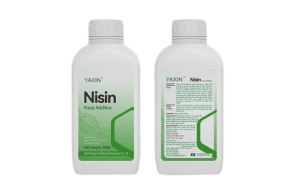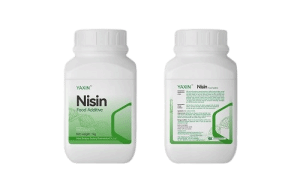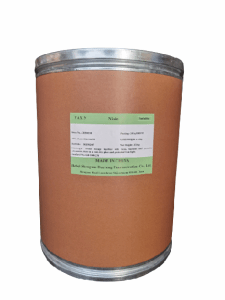
 CONTACT
CONTACT
- Linkman:Linda Yao
- Tel: +8618231198596
- Email:linda.yao@dcpharma.cn
- Linkman:CHARLES.WANG
- Department:Overseas
- Tel: 0086 0311-85537378 0086 0311-85539701
Food Preservative Nisin,Used in Fish Products
TIME:2024-10-25
Nisin is widely used in fish and seafood products, mainly due to its excellent preservative and freshness-keeping properties. Below is a detailed explanation of the use of nisin in fish and seafood products, along with important considerations:
I. Use of Nisin in Fish and Seafood Products
1. Preservation and Freshness
Nisin can effectively control the growth of microorganisms in fish products, particularly inhibiting the activity of Clostridium botulinum, which produces toxins. Its acidic nature helps lower the pH of the surrounding medium, thereby reducing residual nitrite levels and decreasing the formation of nitrosamines.
In the preservation of fish, nisin can also delay the formation of Clostridium botulinum spores in smoked fish and inhibit the growth of Listeria monocytogenes, thus extending the shelf life of the product.
2. Reducing Heat Treatment Intensity
Excessive heat treatment during fish product processing can significantly alter the texture and appearance of the product. By adding nisin, only a lower heat treatment is needed to achieve an extended storage life, which helps maintain the original flavor and texture of the fish product.
3. Replacing Chemical Preservatives
As a natural preservative, nisin can replace part or all of the chemical preservatives, such as potassium sorbate, helping meet consumer demand for healthy and natural foods while also reducing production costs.
II. Key Considerations When Using Nisin
1. Dissolution and Application Method
When using nisin, it should first be dissolved in 0.02 mol/L hydrochloric acid before being added to the fish product. This ensures its even distribution throughout the product, improving its preservative effect.
2. Usage Concentration
The concentration of nisin should be determined based on the specific product, production process, and storage conditions. Typically, the concentration ranges from 25 mg/kg to several hundred mg/kg. In practice, the optimal concentration can be determined through testing.
3. Combination with Other Preservatives
Nisin has a relatively narrow antimicrobial spectrum, primarily inhibiting Gram-positive bacteria. In some cases, it can be used in combination with other preservatives, such as sorbic acid and sodium lactate, to broaden the antimicrobial spectrum and enhance preservation. However, potential interactions between different preservatives should be carefully tested and evaluated beforehand.
4. Storage Conditions
Nisin should be stored in a dry, cool, and dark environment, away from high temperatures, moisture, and direct sunlight, to prevent its preservative effectiveness and shelf life from being compromised.
5. Safety Assessment
While nisin is an efficient, non-toxic, safe, and natural food preservative with no side effects, a safety assessment is still necessary before use to ensure compliance with relevant food safety standards and regulations. This includes conducting toxicological and microbiological tests to evaluate the toxicity and antimicrobial effectiveness of nisin.
Nisin provides significant preservative and freshness-keeping effects in fish products, reduces the need for intense heat treatment, and can replace part or all of chemical preservatives. However, proper attention should be given to the dissolution and application method, usage concentration, combination with other preservatives, storage conditions, and safety assessments. Through careful use, nisin can help ensure the quality and safety of fish products, meeting consumers' health demands.
- Tel:+8618231198596
- Whatsapp:18231198596
- Chat With Skype







